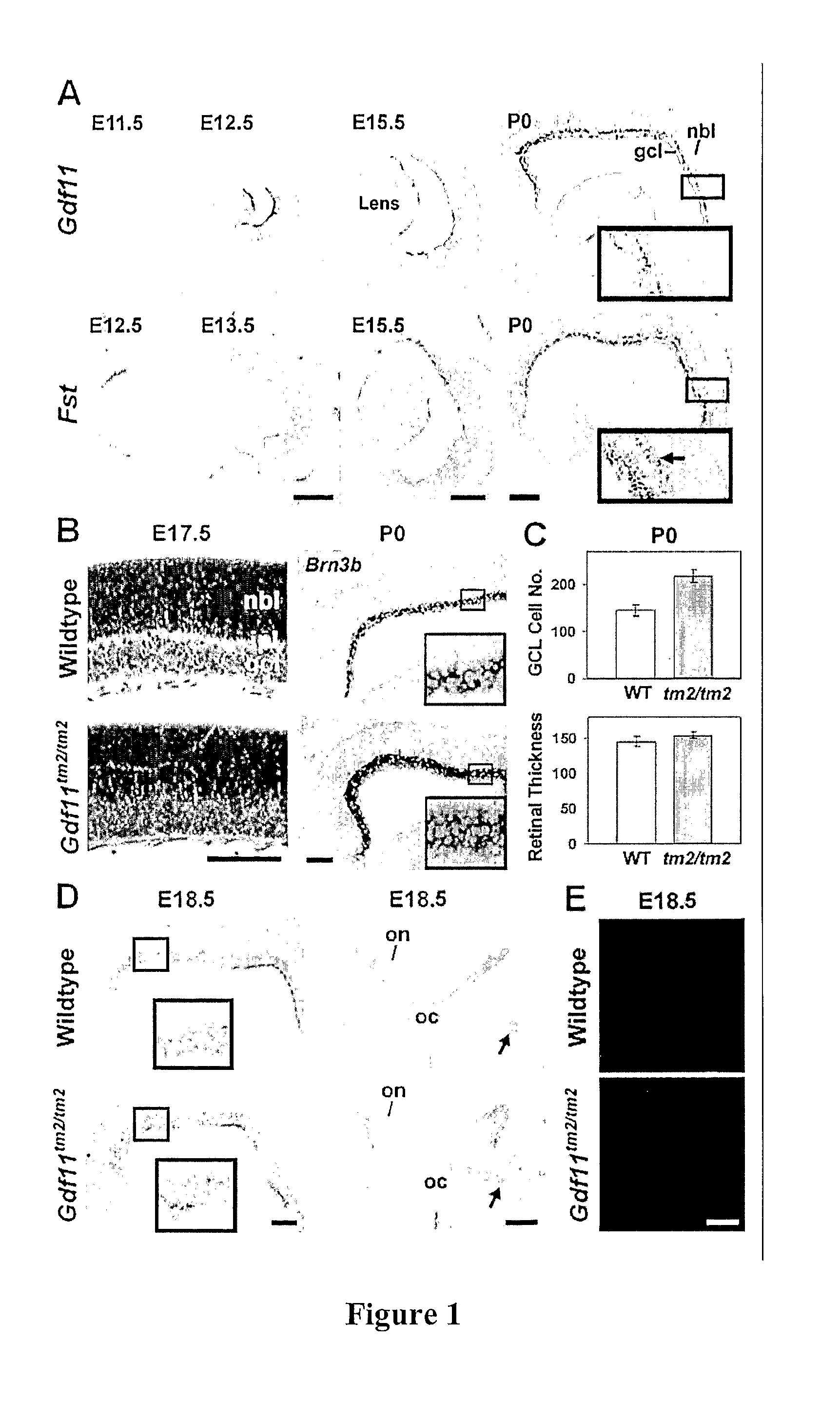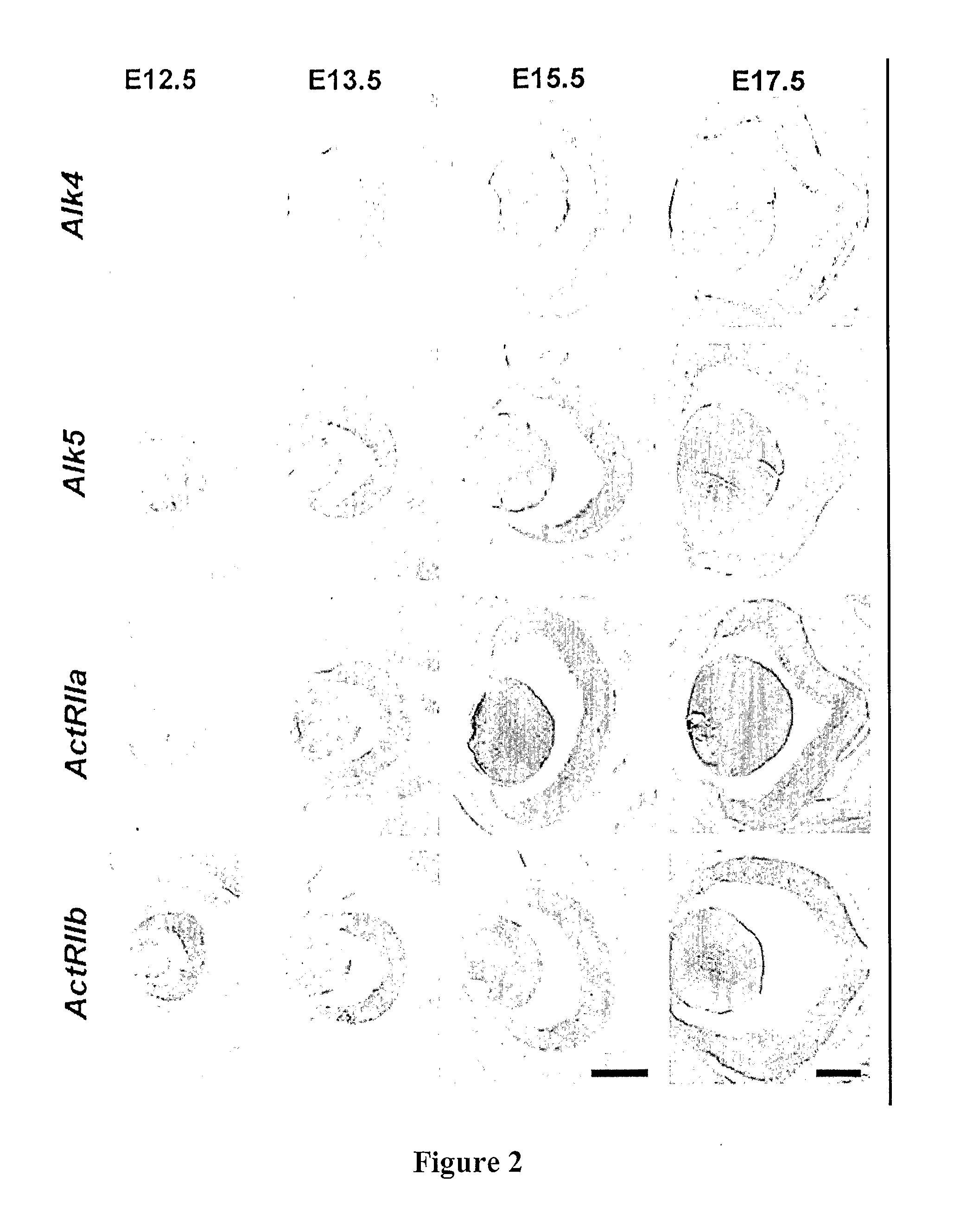Compositions And Methods For Treatment of Neural Disorders Using Transforming Growth Factor-Beta Superfamily Proteins And Their Antagonists
a technology of transforming growth factor and superfamily proteins, which is applied in the field of neural disorders, can solve the problems of affecting the function of the affected organ, few treatment options are currently available, and often not being able to achieve complete restoration of sight, so as to facilitate modulation of susceptibility, modulation of susceptibility, and modulation of susceptibility.
- Summary
- Abstract
- Description
- Claims
- Application Information
AI Technical Summary
Benefits of technology
Problems solved by technology
Method used
Image
Examples
Embodiment Construction
[0027]The inventors have discovered that various compounds and compositions that interact with signaling pathway(s) that are functionally associated with selected members of the TGF-beta superfamily of signaling proteins can be employed to regulate production of neural and sensory tissue, and especially auditory and visual neural tissue, wherein at least in some cases regulation is achieved by changing the susceptibility sensory / neural progenitor cells to developmental stimuli rather than by changing proliferation of progenitors cell.
[0028]Thus, and viewed from another perspective, it should be appreciated that modification of susceptibility to developmental stimuli can be employed as a modality to treat diseases in which progenitor cells and their sensory and neural daughter cells contribute to the disease. Using such approach, compositions and methods are contemplated that identify modifiers of susceptibility to sensory and neural differentiation. Once identified, such compounds a...
PUM
| Property | Measurement | Unit |
|---|---|---|
| concentration | aaaaa | aaaaa |
| concentration | aaaaa | aaaaa |
| pore size | aaaaa | aaaaa |
Abstract
Description
Claims
Application Information
 Login to View More
Login to View More - R&D
- Intellectual Property
- Life Sciences
- Materials
- Tech Scout
- Unparalleled Data Quality
- Higher Quality Content
- 60% Fewer Hallucinations
Browse by: Latest US Patents, China's latest patents, Technical Efficacy Thesaurus, Application Domain, Technology Topic, Popular Technical Reports.
© 2025 PatSnap. All rights reserved.Legal|Privacy policy|Modern Slavery Act Transparency Statement|Sitemap|About US| Contact US: help@patsnap.com



